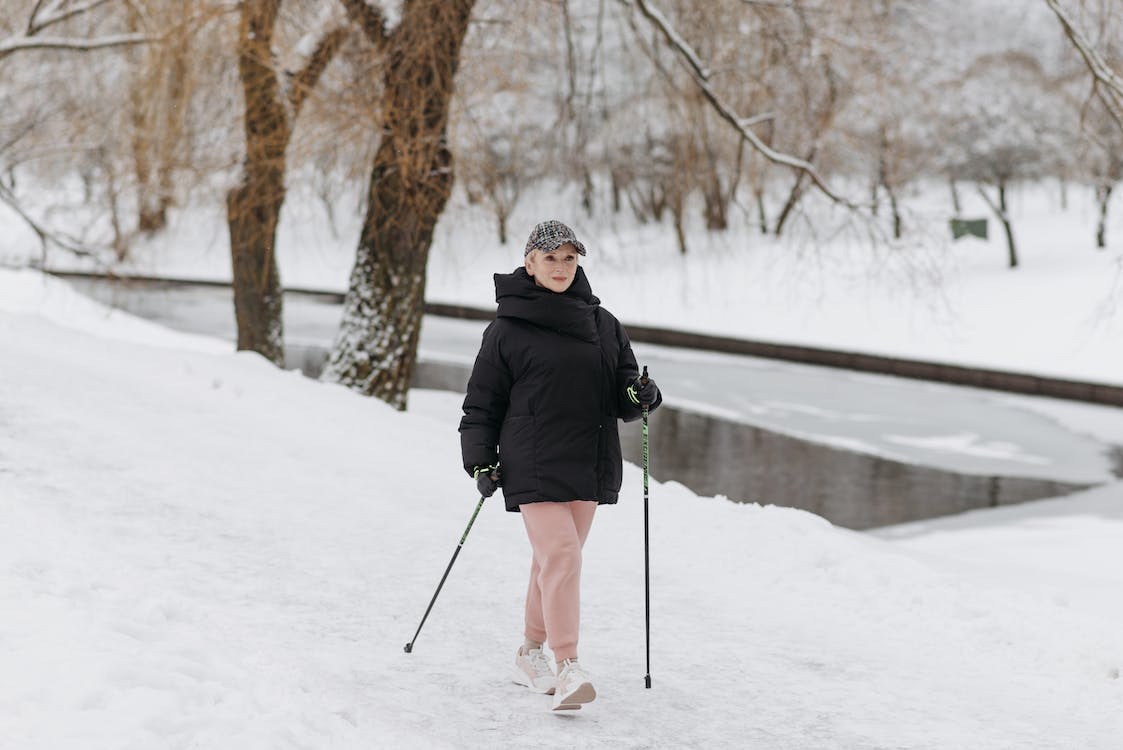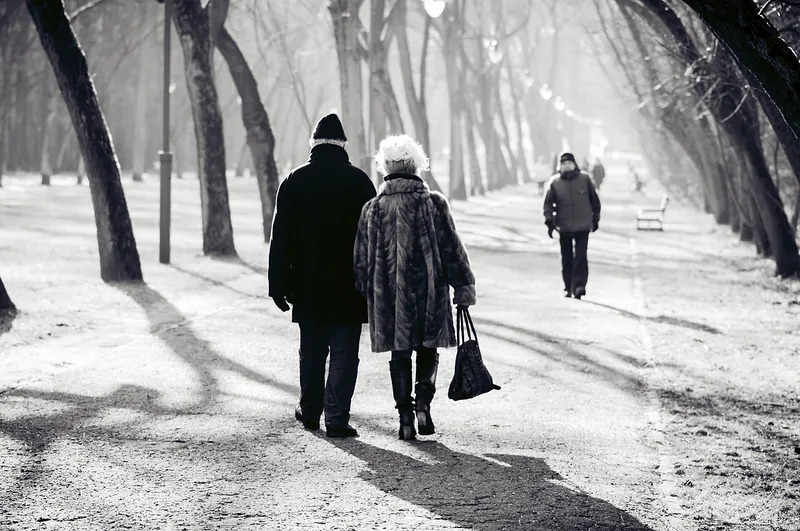For everyone, winter weather can be tough, but senior adults may find it particularly difficult. Older individuals must take extra care when venturing outside because of the colder weather, snow, and ice. Be ready and aware of potential dangers before undertaking any excursion, whether it’s to the grocery store, a walk in the park, or even just a short trip around the block. We’ll provide you with some useful pointers and suggestions in this article on how to stay warm and secure during the winter. We’ve got you covered on everything from selecting the appropriate footwear to remaining active and lowering your risk of falling.
Dress for the winter
Dressing appropriately is the first step in staying safe while taking winter walks. When it comes to winter apparel, layering is essential. To keep sweat away from your skin, put on a base layer composed of moisture-wicking material. You can stay warm by wearing a middle layer of fleece or wool. Finish it off with a weather-resistant outer layer that is windproof and waterproof. To protect your extremities, be careful to put on a warm hat, gloves, and scarf. Keeping your head, hands, and feet warm is crucial because these are the first body parts to lose heat. To keep your feet warm and dry, it’s also crucial to wear water-resistant or waterproof footwear. Pick traction-enhancing footwear to assist you avoid slipping
Rely on mobility aids
Use mobility aids like a cane or walker if you have problems walking or maintaining your balance. On slick terrain, these goods can add extra stability and support, which is crucial. Make sure to choose a product with non-slip tips and a solid structure that is suitable for cold temperatures. Another option for a rest break is a cane or walker with a seat built in. Even heavy-duty wheels are available on some high-quality mobility aids products to keep you going on any terrain and in any weather. Purchasing a mobility aid will significantly improve your ability to move around securely in the winter and get all the activity and exercise you need even in extreme weather.

Avoid hypothermia
When your body loses heat more quickly than it can make it, you could experience the deadly disease known as hypothermia. Make sure to dress warmly and stay out of the cold for short periods of time to prevent hypothermia. When you start to become cold, go inside or somewhere warm to warm up. Observe the early indications of hypothermia, which include shivering, disorientation, and weariness. Do not hesitate to get medical help if you encounter any of these signs.
Prevent frostbites
Another deadly condition that can develop in cold weather is frostbite. Be sure to keep your hands and feet warm and protected to avoid getting frostbite. Numbness or tingling in your extremities could indicate frostbite. If this occurs, quickly enter your home or find a warm location. It’s crucial to take frostbite seriously because it can result in lifelong harm. It may be an indication of serious frostbite if your skin turns white or grayish-yellow; you should get medical help straight away.
Don’t stray off the cleared path
It’s crucial to stick to sidewalks and paths that have been cleared when walking outside in the winter. Avoid walking on snow- or ice-covered surfaces since they can be hazardous and slick. If you must proceed on an unplowed path, proceed with caution and slowly. If necessary, use a mobility device. For improved balance, take tiny steps and keep your feet planted firmly on the ground. If required, use the walls or railings as supports. If you do fall, attempt to land on your side as opposed to your back to minimize damage.
For senior folks, winter weather can present many difficulties, but with the correct planning and information, it can also be a season of fun and safe outdoor activities. Older people can be active, healthy, and safe during the winter by following the advice provided in this guide. There are several actions that can be taken to ensure a safe and comfortable winter season, from selecting the proper footwear to being aware of potential hazards. Consider reviewing this guide to ensure you have the information and resources necessary to safely and confidently enjoy the great outdoors.

